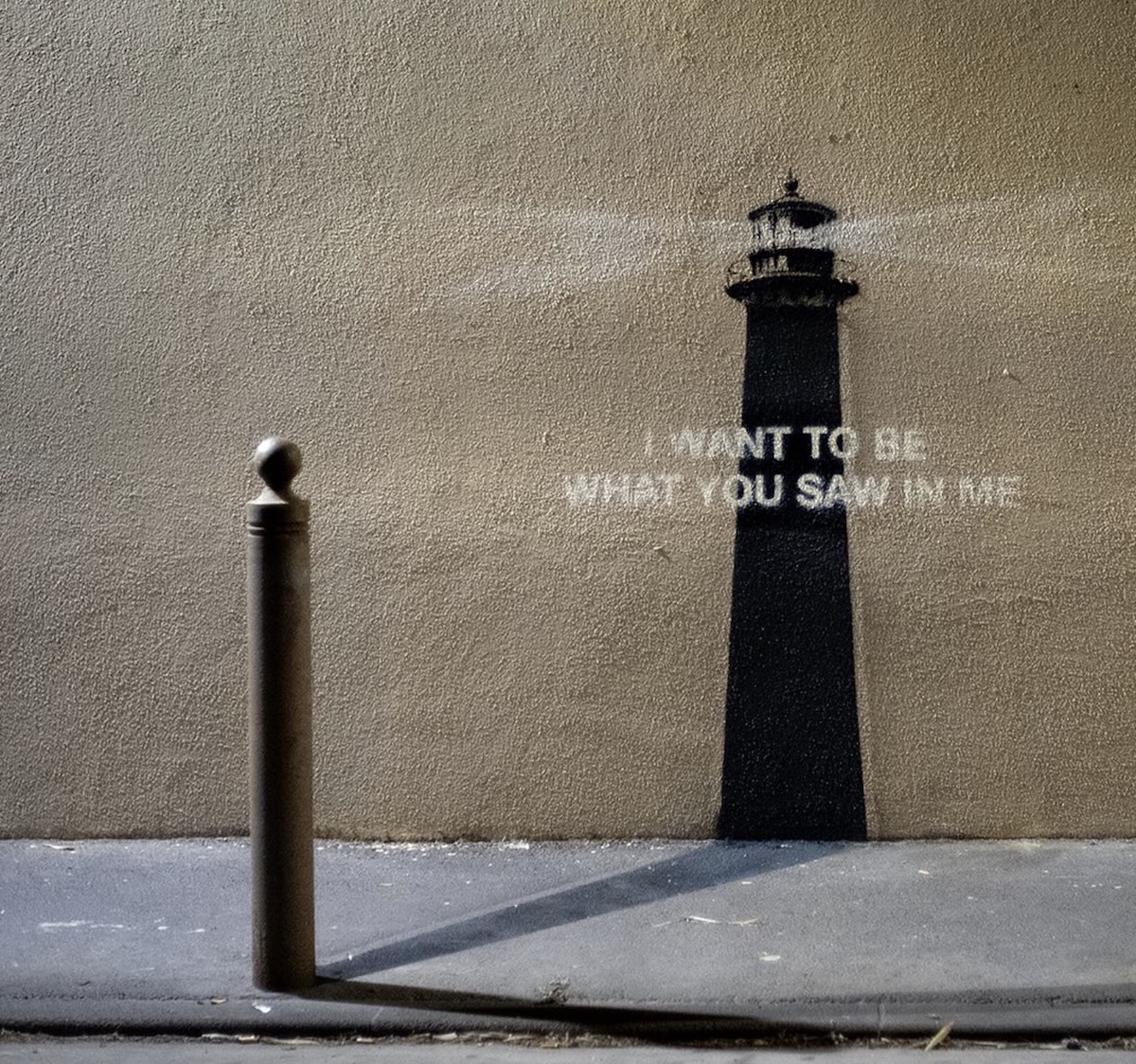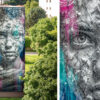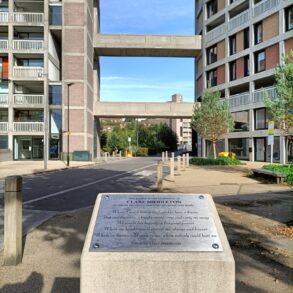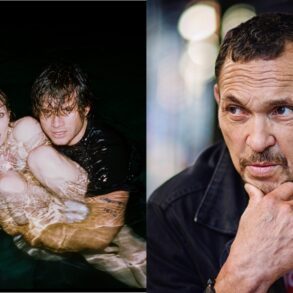
The elusive street artist Banksy has struck again, revealing a mysterious new stencil artwork on his official Instagram account. The piece features a lighthouse painted on a dull beige wall, accompanied by the arcane phrase: “I want to be what you saw in me.” A cleverly drawn false shadow extends from a nearby bollard, transforming the lighthouse into an optical illusion—a silhouette of the mundane street fixture.
A lighthouse that isn’t quite a lighthouse. At first glance, it’s another of the artist’s visual sleights-of-hand, the kind that turns a bollard’s shadow into something yearning to be more. But like all of Banksy’s best work, the meaning slips just out of reach, shifting with the angle of interpretation.
There’s a quiet melancholy to it. Lighthouses stand as beacons, fixed points in the chaos, yet here, the structure dissolves into the silhouette of a street fixture—something ignored underfoot. Is it a sign of failed potential? A monument to the gap between what we’re promised and what we’re given? Or perhaps a jab at the way art—or artists—get flattened into symbols, their messy truths sanded down by expectation?
Context, as ever with Banksy, is key. If the mural is in Marseille, a city where gleaming yachts bob beside makeshift migrant camps, the piece could read as a gut-punch to hollow institutions. Safety, guidance, hope—all reduced to a trick of the light. But Banksy’s genius lies in the refusal to pin it down. The phrase lingers like a half-remembered conversation, nudging viewers to project their regrets and rebellions onto its blank canvas.
And isn’t that the point? The art isn’t in the paint. It’s in the argument that erupts after the collective scratching of heads. Banksy’s work has always thrived in that space between what’s said and what’s heard—between the symbol and the shadow it casts.
True to form, Banksy has left no clues about the work’s location. A wider shot shows two dog walkers passing by, but the nondescript setting offers little help. Online sleuths have speculated it could be in Marseille, France, while others debate its meaning—is it a metaphor for guidance, disillusionment, or something else entirely?
Another circulating image captures a blurred figure on a scooter in front of the piece, with a nearby tag reading “Yaze”—matching the alias of Canadian graffiti artist Marco The Polo, who cites Banksy as an influence.
Banksy’s identity remains fiercely guarded, with authenticity confirmed only through his Instagram. His works often carry sharp political commentary, from immigration to Ukraine’s war, though some, like last summer’s animal stencils across London, remain open to interpretation.
This follows December’s striking Madonna and Child piece, where a wall fixture resembled a bullet wound in the Virgin Mary’s chest. Once again, Banksy merges artistry with ambiguity, leaving the world to decode his latest puzzle.
The artist known as Banksy operates under a veil of anonymity, his real name stubbornly withheld from public knowledge despite global fame. Rising from Bristol’s gritty street art scene in the ’90s, he built a reputation on bold, stencilled imagery—works laced with biting satire, grim comedy, and arresting visuals. Overnight, his pieces materialise on urban surfaces worldwide: concrete walls, railway bridges, and even Israel’s separation barrier in the West Bank. Each creation targets power structures, rampant commercialism, and systemic inequality, transforming public spaces into arenas of dissent.
Unlike traditional artists, Banksy shuns galleries, preferring to reach broader audiences in public spaces. His anonymity fuels intrigue, with speculation about his real name ranging from a collective to a former public schoolboy. Despite the mystery, his influence is undeniable—his pieces sell for millions, yet he mocks the art market, once shredding Girl with Balloon moments after its auction sale.
Banksy’s work is instantly recognisable: bold, ironic, and subversive. From Flower Thrower to Dismaland, his dystopian theme park, he merges activism with art. Governments have painted over his pieces, while fans have torn down walls to preserve them. His 2010 documentary, Exit Through the Gift Shop, blurred the lines between artist and impostor, further cementing his rebel persona.
Whether mocking celebrity culture or spotlighting refugee crises, Banksy’s art sparks debate. He operates in shadows, letting his work speak loudly. In a world obsessed with fame, his anonymity is his ultimate statement.
Tags
Banksy, lighthouse, street art
This post was originally published on this site be sure to check out more of their content.









